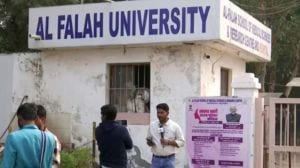Number crunching
The proposed map of differently-abled children is crucial for better welfare schemes
In the run-up to the enactment of the landmark right to education legislation,disability activists had pointed out how the law was ignoring the rights of differently-abled children. In response,Union Human Resource Development Minister Kapil Sibal gave public assurances to the contrary in Parliament. Recent reports that disability-friendly amendments to the law are on the way to Parliament are reassurance that inclusive education is to be more than a mere mantra for this government. Therefore,the governments decision to map differently-abled children is welcome.
On the eve of World Disability Day earlier this month,Union Human Resource Development Minister Kapil Sibal had spoken of the need for such a map,and had even suggested making use of the Unique ID scheme. The HRD ministrys latest announcement that a sub-committee composed of educationists and activists will submit its report in three months time is the necessary next step. The sub-committee is expected to submit its findings within three months. As of now,there are reported to be no definitive figures on differently-abled children. Several government initiatives for differently-abled children,such as providing them access to a 25 per cent quota (along with other disadvantaged children) in private schools under the provision of the right to education legislation,hinge on better data. So do Sibals publicly announced intentions to make educational institutions physically accessible to all. Critically,the current estimates could do with more empirical scrutiny.
Apart from numbers,data on differently-abled children must include the varied types of disabilities,how many enter school,at what point they leave,what kinds of financial packages will be the most effective,and a priority list of infrastructural reforms. It is also important for working out the kind of facilities that must be augmented in our schools. And in a larger sense,the sub-committees report forms the roadmap for not just evolving better disabled-friendly policies,but also indicating a roadmap on how other government welfare policies could incorporate more empirical information.



- 01
- 02
- 03
- 04
- 05




























